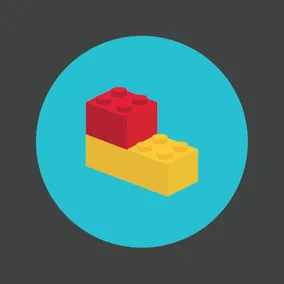Your Website Is Never Done

Becky Radnaev, Former Content Strategist, and
Meira Shuman, Former User Experience Designer
Article Categories:
Posted on
It’s a living entity, not a mummified artifact.
The Golden Gate Bridge is 8,981 feet long. There are more than 10 million square feet of steel that need to be constantly repainted. A few dozen painters battle against the elements to maintain this American icon, day in, day out. Their work is never finished. Once one section of the bridge has been repainted, there’s always another that needs their attention.

It’s a truly Sisyphean task. But it’s also what the painters expect. They don’t see their work as something that’s complete. While its core structure stands firm, attacks from salty sea air, pollution, and UV light mean the bridge is always changing. The process of maintaining it goes on indefinitely.
What if we saw websites in the same way?
When a launch is something you’ve worked towards for months — through all the stages of research and ideation, information architecture, UX design, visual design, copywriting, CMS setup, image selection, content entry — and the site goes live, it’s tempting to say: “Phew, glad that’s finished. Now all I need to do is put some new content up now and again, and the site will take care of itself, right?”
Unfortunately not. Websites are living creatures rather than fossils, frozen in time. This means that even if they feel finished, they should always be evolving.
Design is a series of hypotheses, and the only true way to test those hypotheses is to make them a reality. That’s not to say you shouldn’t start your website development process with user research, or get feedback at the prototype stage, or do thorough QA — you absolutely should do all of those things. But you should also expect to iterate once your website is live, and maybe sooner than you’d think.
As you gather more data on your site’s performance and learn about user behavior, you need to make changes in response to real-world conditions. This can play out in a variety of ways. You might have to:
Pivot your content strategy and explore different types of content – or a different publishing cadence, or new outreach tactics – if your initial body of content isn’t engaging your target audiences
Tweak your site’s UI if you find that the UX patterns you’ve used, even based on best practices, must be optimized
Add new features or sunset existing ones
Rewrite copy that’s not as persuasive or self-explanatory as intended
Upgrade your tech stack as new options become available
Update your design aesthetic to reflect new trends
Review and adjust keywords to improve SEO
Continue enhancing the accessibility, speed, and performance of your website.
The [website's] launch is, in many respects, just the beginning.
How often should you be doing all of this?
The answer is that it depends. Obviously overhauling your website’s aesthetic, re-platforming, or other big ticket changes involve a significant amount of time and investment — so those might be projects you tackle every 3-5 years. But incremental improvements should ideally be embedded into your daily workflow. As soon as the dust settles after launch, have a roadmap ready for collecting and reviewing qualitative and quantitative data on your site, squashing bugs, correcting copy, planning and scoping new features, and producing and evaluating content.
As an agency, we always try to prepare our clients for this work when we hand off designs or a built-out site. We’re well aware that the launch is, in many respects, just the beginning.
Sometimes we’re asked to come back and advise on new iterations — we’ve re-engaged with clients in sectors ranging from higher education to food-tech to healthcare on multiple occasions over months and years. Whenever we do, it’s always fascinating for us to see which of our hypotheses were right, and which can be improved upon. As much as we try to future-proof our work, there are always variables we can’t account for. We need to review the data and adjust accordingly. As Viget’s mantra goes, we’re all about “progress, not perfection.”
Getting any new website out into the world can feel like painting 10 million square feet of steel. While completing that first coat is something to celebrate, it’s crucial not to see it as the end of the process, but one milestone on a long and productive journey.